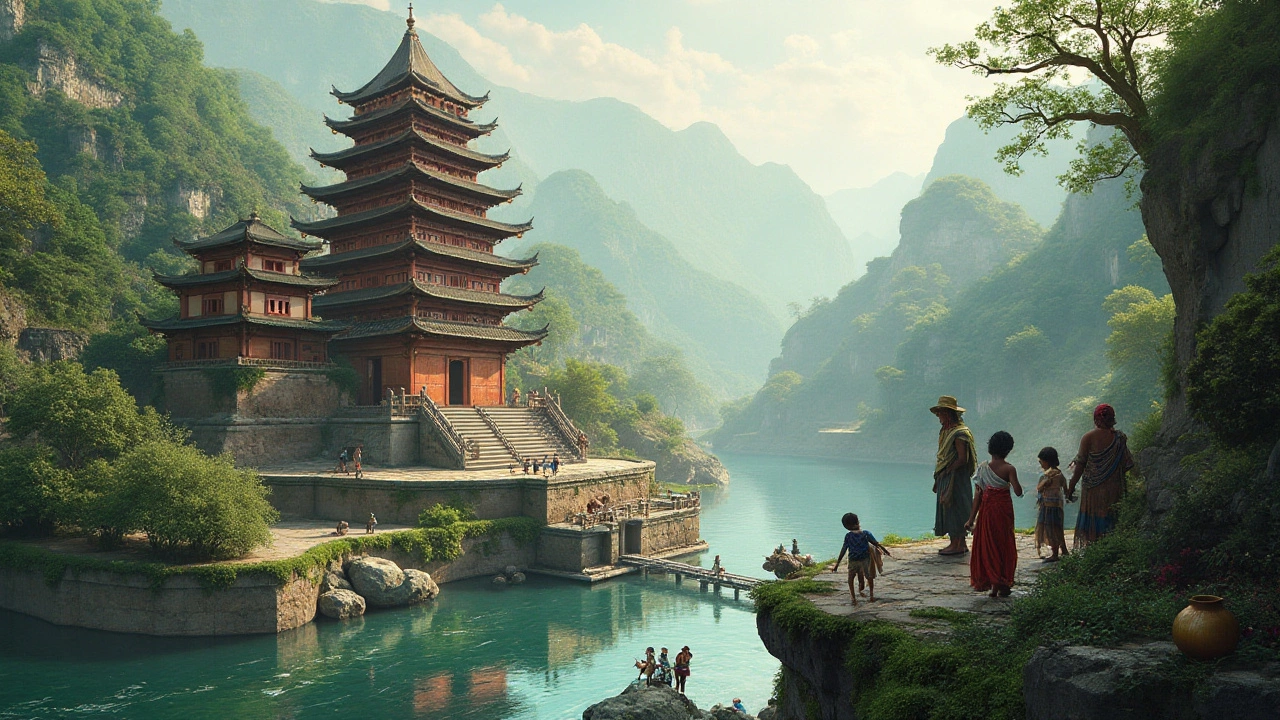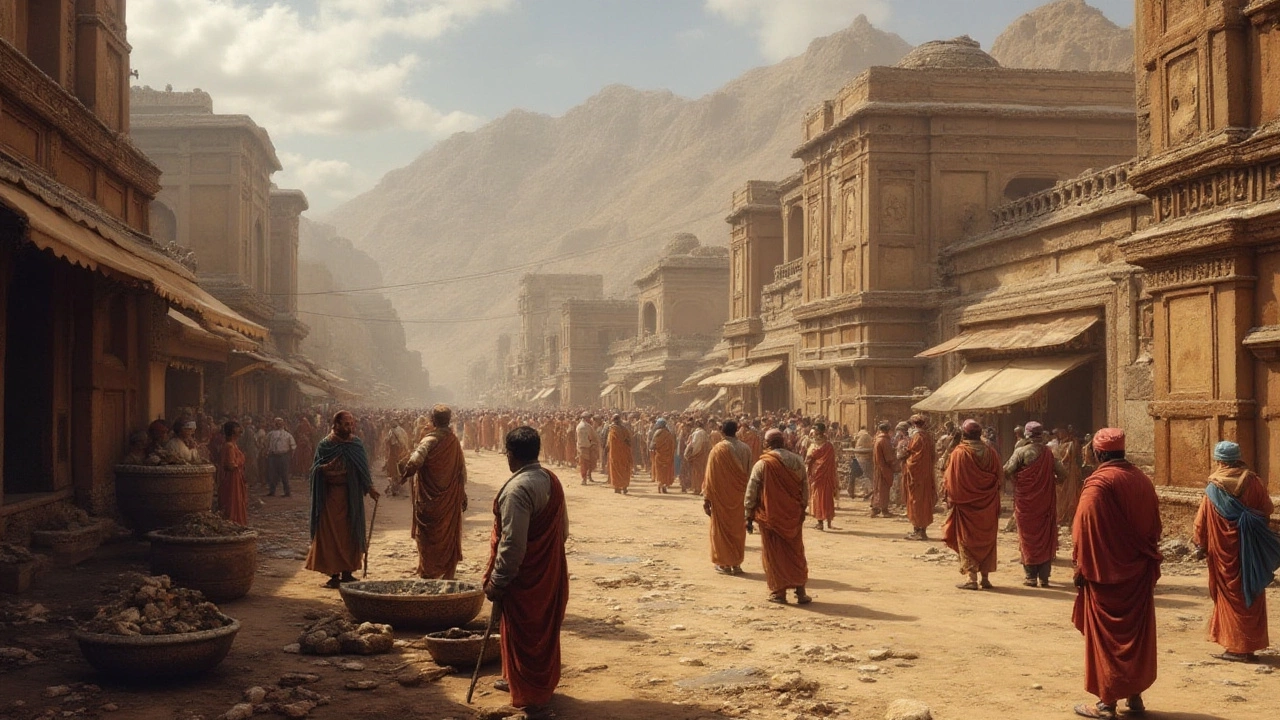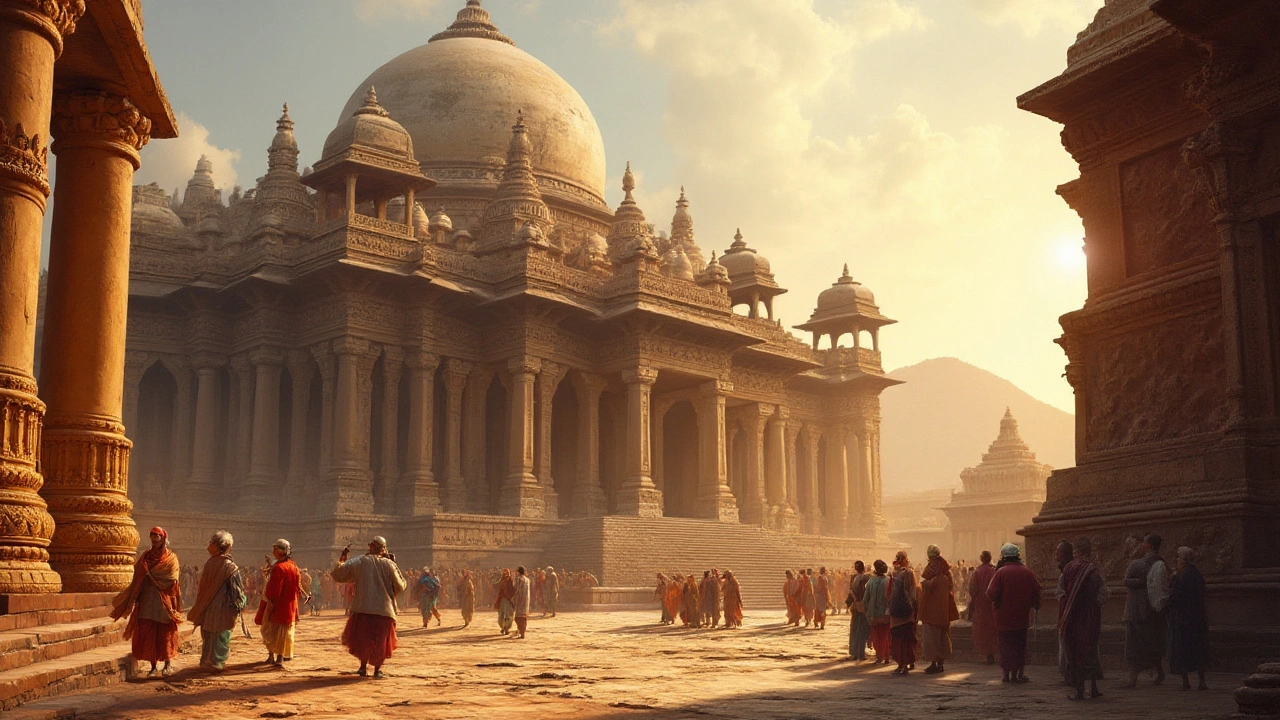The historical landscapes of India and China are tapestries woven with myths, legends, and tangible realities of epochs gone by. These ancient civilizations have enthralled scholars with their narratives, leaving behind relics and monuments that whisper stories of grandeur, devotion, and survival.
When one sets foot on India's historical sites, from the enigmatic ruins of the Indus Valley to the spiritual ghats of Varanasi, the past tangibly resonates. Similarly, China offers its own magnificent canvases, from the sprawling Great Wall to the elegant serenity of its ancient temples. By exploring their heritage, we embark on a journey that spans time, uncovering how both nations have nurtured distinct yet intertwined cultural identities.
Examining India's heritage sites in comparison to China's uncovers a tapestry of shared human experiences, innovations, and a testament to the civilizations’ enduring spirit. The allure of these countries doesn't solely rest on their age but in the stories encapsulated within their historical sites, each deserving of the title 'cradle of civilization.'
- Historical Foundations: Tracing Back the Beginnings
- Cultural and Architectural Evolution
- Iconic Heritage Sites in India and China
- Interconnections and Distinctive Characteristics
Historical Foundations: Tracing Back the Beginnings
In the narrative of ancient civilizations, both India and China have been pivotal, laying the groundwork for immense cultural and technological advancements that resonate through time. The story of India's ancient heritage begins with the Indus Valley Civilization, flourishing as far back as 3300 BCE. This civilization, known for its extraordinary urban planning, paved roads, and advanced drainage systems, laid the bedrock of Indian society. Excavations in Harappa and Mohenjo-daro reveal intricate artifacts, which indicate a society thriving with skill and organized civic lives. They built granaries and the great baths that showcased not only engineering precision but also a deep social structuring.
Moving eastwards, the history of China offers a parallel yet distinctly unique timeline. The Chinese civilization blossomed along the Yellow River, often referred to as the 'Cradle of Chinese Civilization'. Around 2070 BCE, the Xia dynasty, though shrouded in mystery due to scarce archaeological evidence, is considered the earliest ruling dynasty. Later, the Shang dynasty heralded more definitive historical records with the advent of oracle bones, revealing China’s leaning towards divination and rich spiritual insights. They brought bronze casting to unparalleled artistry, a craft that illustrated the civilization’s advancement.
It is fascinating to observe how both cultures were architects of their time, with India and China witnessing the rise of agriculture, metallurgy, and city-state establishments almost simultaneously. An essential factor contributing to the preserved history is the geographical advantage that cradled these ancient cities amid varied terrains, enabling trade and cultural exchange. A scholar once remarked,
"Ancient India and China were not just connected by the Silk Road but by a shared human quest for expression and survival."This connection spurred the globalization of ancient philosophies, mathematics, and sciences originating from these regions, influencing societies across continents.
Indeed, comparing the ancient timelines of India and China is not about identifying which civilization is older but understanding their ancient wisdom and how these foundational eras shape modern life. Both countries have left indelible marks on the cultural and scientific landscapes of humanity. The legacy persists amid ruins and rhymes of history's songs that continue to echo, reinforcing the bond shared by these monumental powers of antiquity.

Cultural and Architectural Evolution
Under the vast tapestry of time, both India and China have undergone significant cultural and architectural evolutions, marked by storytelling stone and reverent artistry that echo through history. These civilizations, long acknowledged as ancient titans, saw the rise and fall of dynasties, empires, and kingdoms that have shaped the way in which their people constructed not just their buildings, but their ideologies and philosophies as well. India's rich heritage is exemplified through the diverse forms of architectural artistry ranging from the intricate carvings of Khajuraho temples to the imposing fortresses of Rajasthan, each narrating a unique saga of rulers and religion. Meanwhile, China showcases evolution through structures like the grand Forbidden City, designed meticulously to reflect the cosmos, the emperor's power, and the order of heaven and earth.
Both lands experienced a unique melding of native practices with foreign influences, leading to extraordinary developments in their built environments. In India, the impact of Persian and Islamic architectural styles is visible in the exquisite arches and domes of structures like the Taj Mahal, which marries Persian elegance with Hindu motifs. Similarly, Buddhism’s advent brought new fiscal dedication towards building monasteries and grand stupas like the Great Sanchi Stupa. On the Chinese front, the Silk Road played a crucial role as a channel for cultural exchange, introducing Buddhist architectural influences and fostering a dialog between East and West, most evident in the stunning Mogao Caves.
The core ethos of ancient India and China often revolved around cosmology and balance, reflecting deeply in city planning and architecture. Indian temple construction adhered to strict Vastu Shastra principles, thought to harness energies of the universe, akin to China's feng shui principles that stress harmony between universally balanced environments and human dwellings. This alignment of the cosmic order saw Indian temples laid out in square patterns, symbolizing the divine connection, while Chinese architecture placed emphasis on architecture's role to achieve equilibrium with nature.
Amy Chua, a Yale law professor noted for her work on cultural studies, once remarked, “Both these giants - India with its celebrated diversity and China with its homogeneous core, have continuously found ways to resonate with the influences that tread through their lands.”This continuous intermingling played a pivotal role in each civilization's ability to adapt and innovate ancient urban and architectural practices relevant to their time. The profound reverence they hold for their ancestral roots is visually and spiritually expressed through these structures, remarkable testaments to human resilience and creativity.
The autonomous growth of these civilizations over millennia has undeniably influenced the path of human development. Excavated relics and restored sites reveal not only their aesthetic expertise but also their advanced understanding of mathematics, astronomy, and engineering. By exploring these heritage sites, one can visibly trace the evolution from the simple brick structures of the Indus Valley Civilization to the tall pagodas and temples that stand today in both countries.
Comparative Analysis: A Journey Through Time
Both the ancient civilizations faced periodic invasions and natural calamities, yet they emerged resilient and innovative each time, bringing forth evolutionary transformations in their architectural narratives. The adoption of new construction techniques, materials, and styles has rendered them timeless treasures. As modern architects study these ancient mazes of stone and spirit, they continue to unravel profound mysteries of our past.
Iconic Heritage Sites in India and China
India and China, steeped in history, offer a plethora of heritage sites that epitomize their extensive cultural pasts. The essence of these sites transcends mere physical structures, telling stories of human endeavor and artistic brilliance from centuries past. In India, the Taj Mahal instantly comes to mind, sitting gracefully on the banks of the Yamuna River. This marble mausoleum, a marvel of Mughal architecture, is not only a symbol of love but also a testament to the intricate craftsmanship that flourished under Mughal patronage. Its white domes reflect a change in shades against the day’s light, painting a mystical aura that enchants visitors worldwide.
Conversely, the Great Wall of China stands as a monumental achievement of engineering, stretching over 13,000 miles. Originally conceived by Emperor Qin Shi Huang in the third century BC, the wall has evolved, serving as both a fortification and a symbol of China's resilience. Each brick, meticulously placed, marks the dedication and labor of workers of the past. The Badaling section near Beijing draws the most visitors, providing a glimpse into China's historical narrative. It is said that over a million people died during the construction of this mighty wall, a number that starkly highlights the price of such an ambitious endeavor.
If we dig deeper into the mosaic of these civilizations, India's Ajanta and Ellora Caves come into focus. These rock-cut caves, adorned with sculptures and paintings, narrate tales of ancient Indian life. The intricate details found within the Ajanta caves, dating back to the 2nd century BC, offer insights into Buddhist teachings and beliefs. The Ellora caves, on the other hand, encompass the essence of religious harmony, with Buddhist, Hindu, and Jain monuments coexisting in one place. Similarly in China, the Terracotta Army stands as a testament to the craftsmanship and belief systems of the Qin Dynasty. Discovered by farmers in 1974, this burial site of Emperor Qin Shi Huang fascinates with approximately 8,000 life-sized soldiers, each bearing distinct facial expressions.
"Ancient sites in both India and China serve as bridges connecting the past to the present, showcasing the evolution of societies through their architectural legacies.” - Historian Dr. Lee Chen
The pursuit of understanding these ancient civilizations inevitably leads one to other significant sites, such as the Konark Sun Temple in India and the Forbidden City in China. The former, a thirteenth-century temple built in the shape of a gigantic chariot, stands as a spectacular example of Kalinga architecture. Its intricate carvings, representing the sun god Surya, are a sight to behold. The Forbidden City, nested in the heart of Beijing, served as the former Chinese imperial palace for centuries. This sprawling complex, with its collection of preserved ancient wooden structures and expansive courtyards, continues to captivate historians and architects alike.
Understanding the significance of these heritage sites is crucial not just for historical appreciation, but for recognizing how cultural exchanges and geographical elements have shaped architectural styles. They represent the visual identity and collective memory of their respective nations. While cultural differences are evident, these sites underscore a shared human curiosity and quest for grandeur that defies boundaries.

Interconnections and Distinctive Characteristics
In the grand narrative of human history, both India and China occupy prominent chapters, offering a rich tapestry of stories, philosophies, and cultural exchanges. These ancient civilizations have been intertwined through trade, religion, and intellectual pursuits for centuries. The Silk Road, a network of trade routes, not only facilitated the exchange of goods but also acted as a conduit for the dissemination of ideas and art between the two regions. It’s fascinating how the ancient scriptures of India found echoes in Chinese philosophy, with renowned scholars translating numerous texts, making them accessible to Chinese intellectuals. This interaction sparked a vibrant dialogue between Buddhism's Indian origins and its unique evolution in Chinese culture.
One cannot ignore the distinct characteristics that set India and China apart in their cultural expressions. Indian heritage sites often embody religious diversity – from the intricate carvings of Khajuraho to the spiritual sanctuaries of Varanasi. The emphasis on spirituality and religious ornamentation is a hallmark of Indian artistry. In contrast, China displays a harmonious blend between its philosophical underpinnings and structural marvels, such as the Great Wall and the Forbidden City, which reflect the vehemence of imperial power coupled with traditional feng shui principles.
Successive dynasties in China managed to preserve and innovate upon their cultural principles, evidenced by the evolution of art forms like calligraphy and pottery that mesmerized even those far beyond its borders. Indian artisans, on the other hand, have historically excelled in creating elaborate stonework and temple architecture that reveal a remarkable marriage between art and theology. Heritage comparison reveals that while India's culture is often mirrored in its warm, vibrant ethos, China's heritage exudes a reserved elegance.
“To trace something unknown back to something known is philosophy.” - Xunzi, a renowned Chinese Confucian philosopher.This quote encapsulates the enduring philosophical discourse that has been a mutual thread in Indo-Chinese dialogues. It drives the importance of learning and adaptation, traits both nations have harnessed through millennia.
Exploring these ancient civilizations uncovers a mutual respect for knowledge and innovation. It also reveals how both nations have, over the centuries, managed to preserve their unique identities whilst embracing new influences, enabling them to leave a lasting imprint on the cultural landscape of humanity. As we dissect the nuances of their heritage comparison, it becomes clear that their contributions extend beyond mere architectural marvels; they lie in the intellectual, artistic, and philosophical dimensions they have gifted to the world.
